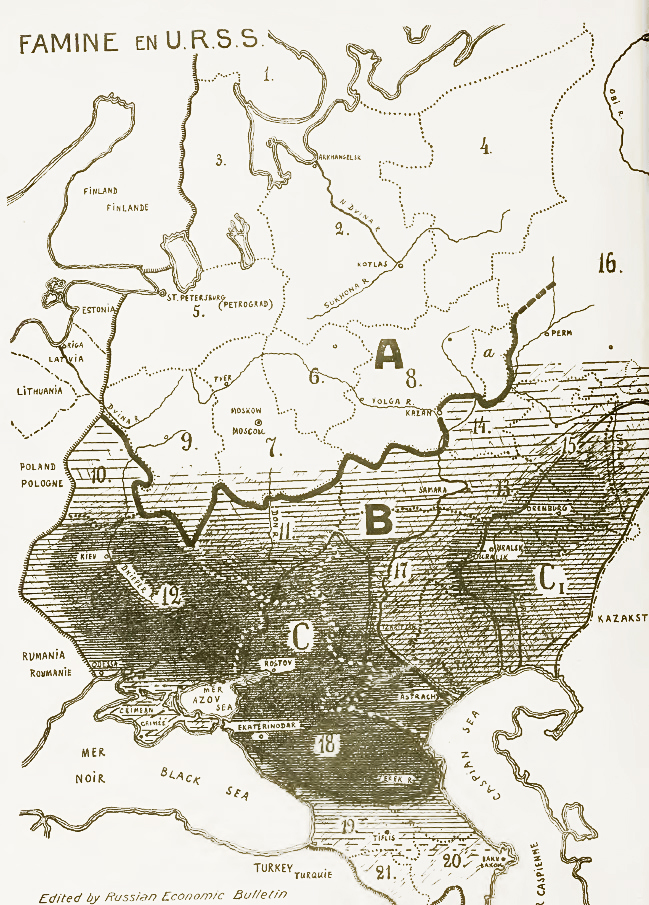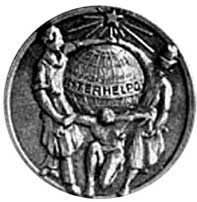|
Julius Fučík (journalist)
Julius Fučík () (23 February 1903 – 8 September 1943) was a Czech journalist, critic, writer, and active member of Communist Party of Czechoslovakia. For his part at the forefront of the anti-Nazi resistance during the Second World War, he was imprisoned and tortured by the Gestapo in Prague, and executed in Berlin. While in prison, Fučík recorded his interrogation experiences on small pieces of paper, which were smuggled out and published after the war as '' Notes from the Gallows''. The book established Fučík as a symbol of resistance to oppression, as well as an icon of communist propaganda. Early life Julius Fučík was born into a working-class family in Prague. His father was a steelworker, and his uncle and namesake was the composer Julius Fučík. In 1913, Fučík moved with his family from Prague to Plzeň (Pilsen) where he attended the state vocational high school. Already as a twelve-year-old boy he was planning to establish a newspaper named ''Slovan' ... [...More Info...] [...Related Items...] OR: [Wikipedia] [Google] [Baidu] |
Prague
Prague ( ; cs, Praha ; german: Prag, ; la, Praga) is the capital and largest city in the Czech Republic, and the historical capital of Bohemia. On the Vltava river, Prague is home to about 1.3 million people. The city has a temperate oceanic climate, with relatively warm summers and chilly winters. Prague is a political, cultural, and economic hub of central Europe, with a rich history and Romanesque, Gothic, Renaissance and Baroque architectures. It was the capital of the Kingdom of Bohemia and residence of several Holy Roman Emperors, most notably Charles IV (r. 1346–1378). It was an important city to the Habsburg monarchy and Austro-Hungarian Empire. The city played major roles in the Bohemian and the Protestant Reformations, the Thirty Years' War and in 20th-century history as the capital of Czechoslovakia between the World Wars and the post-war Communist era. Prague is home to a number of well-known cultural attractions, many of which survived the ... [...More Info...] [...Related Items...] OR: [Wikipedia] [Google] [Baidu] |
Czech Social Democratic Party
The Czech Social Democratic Party ( cs, Česká strana sociálně demokratická, ČSSD, ) is a social-democratic political party in the Czech Republic. Sitting on the centre-left of the political spectrum and holding pro-European views, it is a member of the Party of European Socialists, the Socialist International, and the Progressive Alliance. Masaryk Democratic Academy is the party-affiliated's think tank. The ČSSD was a junior coalition party within Andrej Babiš' Second Cabinet's minority government from June 2018, and was a senior coalition party from 1998 to 2006 and from 2013 to 2017. It held 15 seats in the Chamber of Deputies of the Czech Republic following the 2017 Czech legislative election in which the party lost 35 seats. From 2018 to 2021, the party was led by Jan Hamáček, who has since been replaced by Roman Onderka as temporary leader after the 2021 Czech legislative election, in which the party lost all of its seats after falling below 5%. History The S ... [...More Info...] [...Related Items...] OR: [Wikipedia] [Google] [Baidu] |
Adolf Hitler
Adolf Hitler (; 20 April 188930 April 1945) was an Austrian-born German politician who was dictator of Nazi Germany, Germany from 1933 until Death of Adolf Hitler, his death in 1945. Adolf Hitler's rise to power, He rose to power as the leader of the Nazi Party, becoming the Chancellor of Germany, chancellor in 1933 and then taking the title of in 1934. During his dictatorship, he initiated European theatre of World War II, World War II in Europe by invasion of Poland, invading Poland on 1 September 1939. He was closely involved in military operations throughout the war and was central to the perpetration of the Holocaust: the genocide of Holocaust victims, about six million Jews and millions of other victims. Hitler was born in Braunau am Inn in Austria-Hungary and was raised near Linz. He lived in Vienna later in the first decade of the 1900s and moved to Germany in 1913. He was decorated during his Military career of Adolf Hitler, service in the German Army in Worl ... [...More Info...] [...Related Items...] OR: [Wikipedia] [Google] [Baidu] |
Holodomor
The Holodomor ( uk, Голодомо́р, Holodomor, ; derived from uk, морити голодом, lit=to kill by starvation, translit=moryty holodom, label=none), also known as the Terror-Famine or the Great Famine, was a man-made famine in Soviet Ukraine from 1932 to 1933 that killed millions of Ukrainians. The Holodomor was part of the wider Soviet famine of 1932–1933 which affected the major grain-producing areas of the Soviet Union. While scholars universally agree that the cause of the famine was man-made, whether the Holodomor constitutes a genocide remains in dispute. Some historians conclude that the famine was planned and exacerbated by Joseph Stalin in order to eliminate a Ukrainian independence movement. This conclusion is supported by Raphael Lemkin. Others suggest that the famine arose because of rapid Soviet industrialisation and collectivization of agriculture. Ukraine was one of the largest grain-producing states in the USSR and was subject to unre ... [...More Info...] [...Related Items...] OR: [Wikipedia] [Google] [Baidu] |
Industrialization In The Soviet Union
Industrialisation in the Soviet Union was a process of accelerated building-up of the industrial potential of the Soviet Union to reduce the economy's lag behind the developed capitalist states, which was carried out from May 1929 to June 1941. The official task of industrialisation was the transformation of the Soviet Union from a predominantly agrarian state into a leading industrial one. The beginning of socialist industrialisation as an integral part of the "triple task of a radical reorganisation of society" ( industrialisation, economic centralisation, collectivisation of agriculture and a cultural revolution) was laid down by the first five-year plan for the development of the national economy lasting from 1928 until 1932. In Soviet times, industrialisation was considered a great feat. The rapid growth of production capacity and the volume of production of heavy industry (4 times) was of great importance for ensuring economic independence from capitalist countries and s ... [...More Info...] [...Related Items...] OR: [Wikipedia] [Google] [Baidu] |
Dekulakization
Dekulakization (russian: раскулачивание, ''raskulachivanie''; uk, розкуркулення, ''rozkurkulennia'') was the Soviet campaign of political repressions, including arrests, deportations, or executions of millions of kulaks (prosperous peasants) and their families. Redistribution of farmland started in 1917 and lasted until 1933, but was most active in the 1929–1932 period of the first five-year plan. To facilitate the expropriations of farmland, the Soviet government portrayed kulaks as class enemies of the Soviet Union. More than 1.8 million peasants were deported in 1930–1931.Robert Conquest (1986) ''The Harvest of Sorrow: Soviet Collectivization and the Terror-Famine''. Oxford University Press. .Nicolas Werth, Karel Bartošek, Jean-Louis Panné, Jean-Louis Margolin, Andrzej Paczkowski, Stéphane Courtois, ''The Black Book of Communism: Crimes, Terror, Repression'', Harvard University Press, 1999, hardcover, 858 pages, Lynne Viola ''The Unknown ... [...More Info...] [...Related Items...] OR: [Wikipedia] [Google] [Baidu] |
Collectivization In The Soviet Union
The Soviet Union introduced the collectivization (russian: Коллективизация) of its agricultural sector between 1928 and 1940 during the ascension of Joseph Stalin. It began during and was part of the first five-year plan. The policy aimed to integrate individual landholdings and labour into collectively-controlled and state-controlled farms: ''Kolkhozes'' and ''Sovkhozes'' accordingly. The Soviet leadership confidently expected that the replacement of individual peasant farms by collective ones would immediately increase the food supply for the urban population, the supply of raw materials for the processing industry, and agricultural exports via state-imposed quotas on individuals working on collective farms. Planners regarded collectivization as the solution to the crisis of agricultural distribution (mainly in grain deliveries) that had developed from 1927. This problem became more acute as the Soviet Union pressed ahead with its ambitious industrializati ... [...More Info...] [...Related Items...] OR: [Wikipedia] [Google] [Baidu] |
Central Asia
Central Asia, also known as Middle Asia, is a subregion, region of Asia that stretches from the Caspian Sea in the west to western China and Mongolia in the east, and from Afghanistan and Iran in the south to Russia in the north. It includes the former Soviet Union, Soviet republics of the Soviet Union, republics of Kazakhstan, Kyrgyzstan, Tajikistan, Turkmenistan, and Uzbekistan, which are colloquially referred to as the "-stans" as the countries all have names ending with the Persian language, Persian suffix "-stan", meaning "land of". The current geographical location of Central Asia was formerly part of the historic region of Turkestan, Turkistan, also known as Turan. In the pre-Islamic and early Islamic eras ( and earlier) Central Asia was inhabited predominantly by Iranian peoples, populated by Eastern Iranian languages, Eastern Iranian-speaking Bactrians, Sogdians, Khwarezmian language, Chorasmians and the semi-nomadic Scythians and Dahae. After expansion by Turkic peop ... [...More Info...] [...Related Items...] OR: [Wikipedia] [Google] [Baidu] |
Interhelpo
Interhelpo (''international laboristal helpo'') was an industrial cooperative of workers and farmers (Esperantists and Idists) between 1923 and 1943, established for the special purpose of helping to build up socialism in Soviet Kyrgyzstan. The legal framework for the migration of working forces from the West to the Soviet Union was established through a resolution on “Proletarian help for Soviet Russia” (proletarskaya pomoshch’ sovetskoy Rossii) adopted by the Fourth World Congress of the Communist International (1922). On May 1, 1923, Interhelpo — an acronym of the Ido compound ''international laboristal helpo'' — was founded in Žilina, Czechoslovakia (now Slovakia) on the initiative of the Czechoslovak Bolshevik Rudolf Pavlovič Mareček, who had actively participated in fights against Basmachis in Semirechye and was editor of the newspaper ''Zarya Svobody'' ("The Dawn of Freedom") in neighboring Verniy. Other Czechoslovak agricultural cooperatives founded with t ... [...More Info...] [...Related Items...] OR: [Wikipedia] [Google] [Baidu] |
Collectivism And Individualism
In sociology, a social organization is a pattern of relationships between and among individuals and social groups. Characteristics of social organization can include qualities such as sexual composition, spatiotemporal cohesion, leadership, structure, division of labor, communication systems, and so on. And because of these characteristics of social organization, people can monitor their everyday work and involvement in other activities that are controlled forms of human interaction. These interactions include: affiliation, collective resources, substitutability of individuals and recorded control. These interactions come together to constitute common features in basic social units such as family, enterprises, clubs, states, etc. These are social organizations. Common examples of modern social organizations are government agencies, NGO's and corporations. Elements Social organizations happen in everyday life. Many people belong to various social structures—institutional ... [...More Info...] [...Related Items...] OR: [Wikipedia] [Google] [Baidu] |
Soviet Union
The Soviet Union,. officially the Union of Soviet Socialist Republics. (USSR),. was a transcontinental country that spanned much of Eurasia from 1922 to 1991. A flagship communist state, it was nominally a federal union of fifteen national republics; in practice, both its government and its economy were highly centralized until its final years. It was a one-party state governed by the Communist Party of the Soviet Union, with the city of Moscow serving as its capital as well as that of its largest and most populous republic: the Russian SFSR. Other major cities included Leningrad (Russian SFSR), Kiev (Ukrainian SSR), Minsk ( Byelorussian SSR), Tashkent (Uzbek SSR), Alma-Ata (Kazakh SSR), and Novosibirsk (Russian SFSR). It was the largest country in the world, covering over and spanning eleven time zones. The country's roots lay in the October Revolution of 1917, when the Bolsheviks, under the leadership of Vladimir Lenin, overthrew the Russian Provisional Government ... [...More Info...] [...Related Items...] OR: [Wikipedia] [Google] [Baidu] |






.jpg)

.png)
